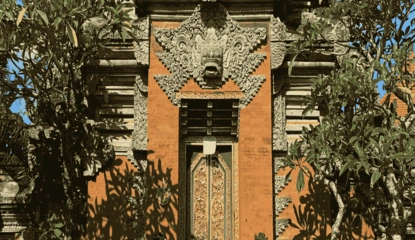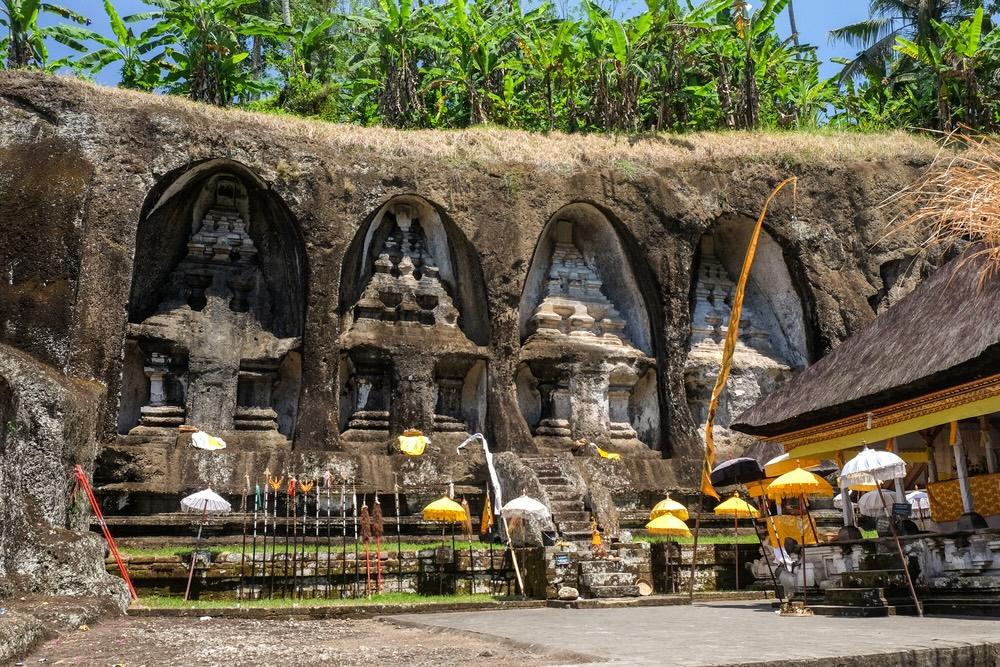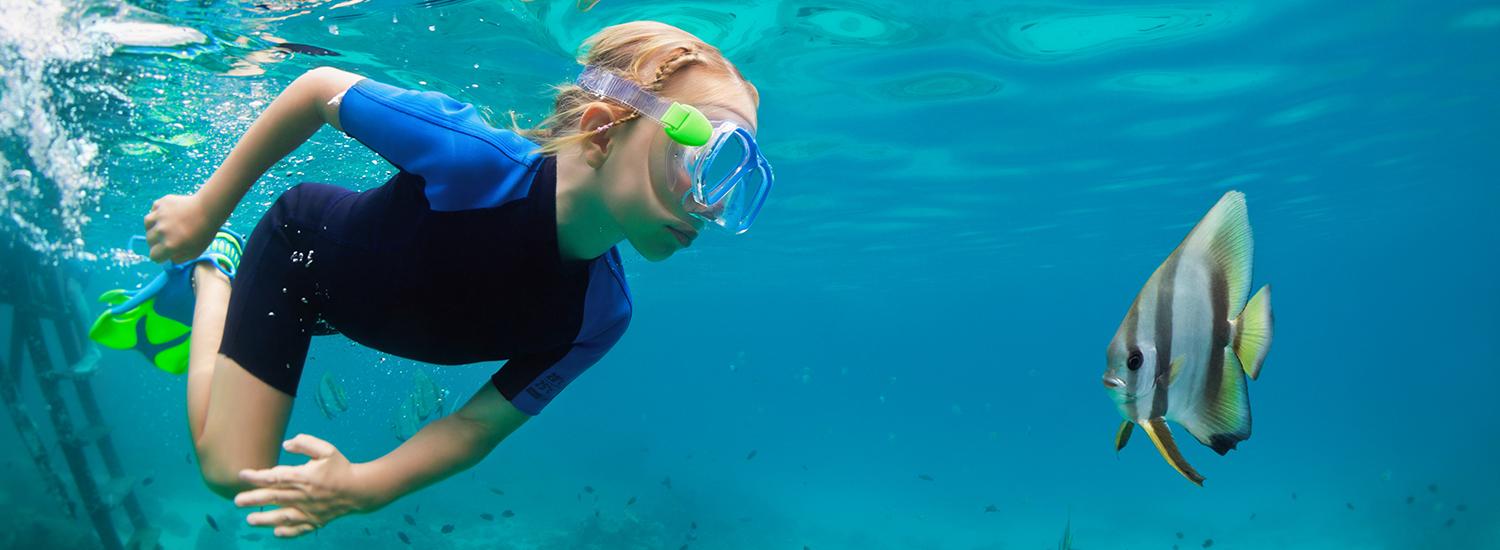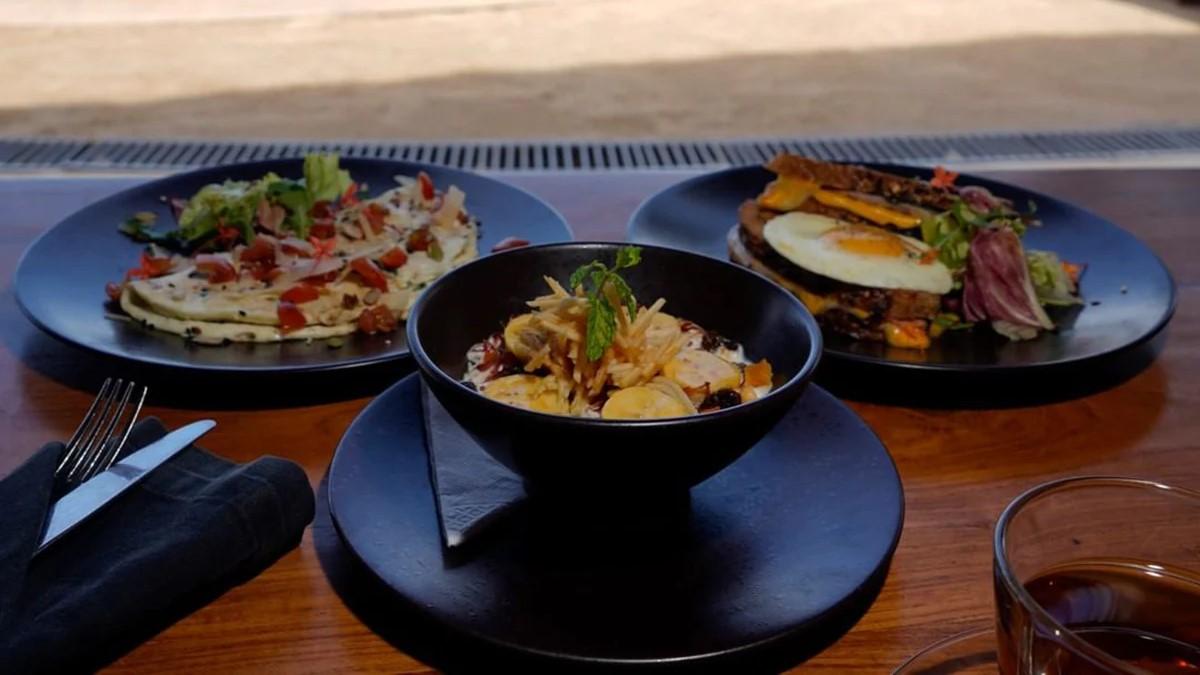Gunung Kawi Temple is one of the most stunning ancient sites on the island of Bali, located in the valley of the Pakerisan River, precisely in Banjar Penaka, Tampaksiring Village, Gianyar.
Unlike other Hindu temples in Bali, this temple features unique temple sculpture architecture, carved directly into the rock cliffs.
This uniqueness, coupled with the natural scenery of the green and beautiful river valley, makes this temple a cultural and historical tourist destination that should not be missed.
The site offers an immersive experience of the history of the ancient Balinese kingdom, along with the soothing beauty of nature.
History and Identity of the Magnificent Cliff Temple
Gunung Kawi Temple is believed to have been built in the 11th century AD, during the reign of King Anak Wungsu of the Warmadewa Dynasty.
The complex consists of ten carved temples (chandi rejang) carved into the recesses of a rock cliff. These temples are generally believed to be places of worship and commemoration for kings and members of the royal family of the Warmadewa Dynasty.
Some of them are believed to be the tombs of King Anak Wungsu himself, as well as his concubines and relatives.
Temple designs carved directly into the rock cliffs are a scarce and impressive feature.
The creation process likely required exceptional sculpting skills and a profound understanding of natural topography. The existence of this complex in a hidden river valley also adds to the sacred and mysterious impression.
Complex Structure and Area Divisions
The complex is divided into several groups of temples scattered on both sides of the Pakerisan River. To reach it, visitors must descend around 300 steps that offer beautiful views of terraced rice fields and lush green valleys.
Temple Group on the West Side of the River: This is the leading temple group, consisting of five sculpted temples, which is believed to be the tomb of King Anak Wungsu.
At the front of this temple group is an ancient bathing pool and a small waterfall that adds to the calm atmosphere.
- Temple Group on the East Side of the River
After crossing the bridge over the Pakerisan River, visitors will find four other sculpted temples believed to be the tombs of the king's concubines.
- One Separate Temple
There is a slightly separate sculpted temple on the south side, possibly dedicated to a prime minister or other important figure.
In addition to the main temples, the complex also has several hermitages (small rooms carved into the cliff) that were once used by monks or rishis for meditation and worship.
Natural Beauty and Spiritual Atmosphere
In addition to its historical and architectural value, Gunung Kawi Temple is also mesmerizing with the natural beauty of its surroundings. The green Pakerisan River valley, with the sound of gurgling water and chirping birds, creates a calm and peaceful atmosphere.
The journey down the stairs through the lush rice terraces is a refreshing experience in its own right.
The spiritual atmosphere at this temple is palpable. Despite being an ancient Hindu site, it exudes an aura of serenity that invites meditation and reflection.
Many visitors come to enjoy the silence and natural beauty while feeling the spiritual energy of this ancient site.
The Role of Culture and Tourism
Gunung Kawi Temple is one of Bali's most important cultural tourism destinations, attracting travelers seeking a more in-depth experience of the island's history and spirituality.
The site is a testament to Bali's glorious royal past and the sculptural skills of its people. It also supports the local economy through tourism.
As part of Bali's cultural landscape, Candi Gunung Kawi can be the venue for various traditional ceremonies or local religious rituals, especially during certain celebrations.
This offers visitors the opportunity to witness firsthand the rich traditions of Bali. A visit to this temple complex offers a soothing blend of historical adventure, art appreciation, and spiritual experience.
How to Visit Gunung Kawi?
To visit Gunung Kawi, you must take a route from Denpasar, Bali. If you depart from Jakarta, here are the steps:
From Jakarta to Bali
- Fly from Soekarno-Hatta Airport (CGK) to I Gusti Ngurah Rai Airport (DPS) in Denpasar.
- Commercial flights are available regularly, with a duration of approximately 1 hour and 30 minutes.
- Upon arrival at Ngurah Rai, continue the journey using a rental car with a driver (recommended for flexibility). You can also rent a motorbike if you're traveling solo or have limited luggage.
Land route from Denpasar to Gunung Kawi
- Distance: About 38 km north of Denpasar (about 1 to 1.5 hours drive)
- General route (car/motorcycle/bus):
- Take Jalan Prof. Ida Bagus Mantra to Jalan WR Supratman to the Tampaksiring area.
- Continue to Jl. Raya Pejeng Tampaksiring to Jl. Yudistira, then to Jl. Bayu Brata, until you reach the Gunung Kawi parking area.
- Follow the directions. You can use Google Maps by searching for the keywords "Gunung Kawi Temple" or "Gunung Kawi Temple".
Here is additional information that you need to pay attention to before visiting Gunung Kawi:
Entrance ticket fee:
- The price for domestic tourists is Rp 30,000, and the cost for foreign tourists is Rp 50,000.
- There is a parking fee, and sarongs ("kamen") and scarves must be worn upon entry.
- Opening hours: Every day, 08:00 to 18:00 WITA.
Entry and Exploration
After parking, you will descend about 300 to 400 steps to the valley and the main pool.
Before deciding to go up, ensure you have prepared your stamina, as the journey up and down is quite draining and can take 1 to 2 hours of thorough travel.
Also, don't forget to bring water and comfortable footwear. Please respect the sacred area by wearing sarongs and scarves.
Gunung Kawi is not just a place, but an inner journey that flows with the roar of the river and the whisper of the wind.
Behind the silent cliffs and stone steps, you will find a profound silence that invites the soul to reconnect with the most profound meaning of a journey.
Come and witness for yourself the alluring beauty of Gunung Kawi that touches the heart and soul.










